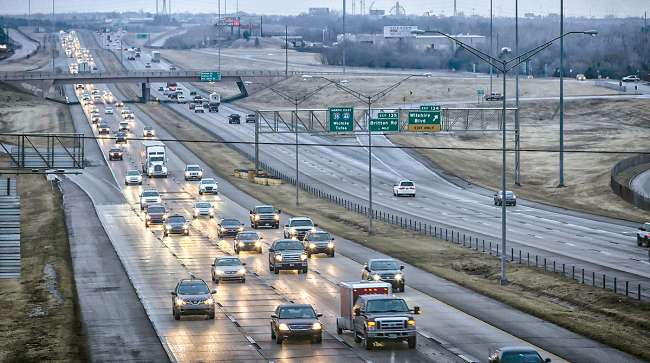Staff Reporter
Federal Shutdown Affects Oklahoma DOT’s Future Road Projects

The Oklahoma Department of Transportation has delayed the bidding process for upcoming infrastructure projects due to funding uncertainty caused by the ongoing partial shutdown of the federal government.
Even though the Highway Trust Fund, which assists states with maintenance and construction projects, remains operational, ODOT officials said they’ve started to feel the effects of the shutdown on future projects.
Also, because the government has been buoyed by continuing resolutions since the fall, states haven’t received all of the funding that was scheduled for them in the appropriations process. Those ODOT projects that were already under contract are clipping along as scheduled, but agency spokeswoman Terri Angier said upcoming projects face delays.
“The existing projects will be OK as long as things are still moving forward with the Federal Highway [Administration] being able to approve our reimbursements,” Angier said. “However, authorization for future projects is tied to the continuing resolution and the shutdown.”
FUTURE PROJECTS: Curious about future highway construction in your area? Check out ODOT's 8 Year Plan: https://t.co/UUIz9ownUk pic.twitter.com/6jIaK46go4 — OKDOT (@OKDOT) January 22, 2019
The shutdown began Dec. 22, and is now the longest in the nation’s history. It was triggered after Democrats refused to agree to a $5.7 billion funding package to pay for a wall along the U.S.-Mexico border that President Donald Trump promised supporters during his presidential campaign.
ODOT had $180 million planned for project letting in January. Of that total, some $102 million in projects involving federal funds were delayed. For February $108 million was dedicated but about $36 million is being delayed.
The projects that involve federal funding include highways, county roads and city streets.
“We have a very fiscally responsible schedule because of years’ underfunding,” Angier said. “We’ve had to learn exactly how to spend every penny and make sure every dollar is placed on needed projects.”
Some of the projects that are being delayed this month and February involve significant freight corridors. One example is a $9 million ramp reconstruction on Interstate 35 in McClain County, just south of Oklahoma City, which runs north to south through the state. The project was meant to reconfigure the ramps to help vehicles, especially trucks, accelerate and decelerate more smoothly.
Another example is a resurfacing project on U.S. Route 69. ODOT spokesman Cody Boyd identified U.S. 69 as an important link for traffic moving to Texas and Missouri and said the route sees “interstate levels of truck traffic.”
Angier said Oklahoma’s position in the country makes it an important conduit for traffic moving north from Texas and east to west from Washington to Los Angeles.
“Almost all of our routes are used for freight and truck traffic because centrally where we’re located, you’ll touch one corner of our state or another,” Angier said. “You’re going catch one of the highways in Oklahoma at some point.”
Angier explained that January and February are important letting months for ODOT because they set the stage for projects that occur during the temperate weather of the spring and summer.
Project letting involves environmental considerations as well. ODOT workers navigate projects around the nesting season of the cliff swallow, a federally protected species that builds nests out of mud on surfaces like cliff faces and the undersides of bridges. If a certain bridge project is not awarded in February and under contract by March, workers risk interfering with the birds’ nesting season.
“We can’t really let the project because the contractor has to wait for that to be over before they can start,” Angier said. “It domino-effects in pushing us back.”




